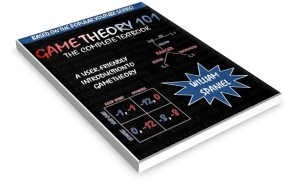Now that we understand the difference between complete and incomplete information, we can start solving games of the latter type. This lecture provides a quick introduction to Bayesian Nash equilibrium.
Takeaway Points
- In a complete information game, the elements of the game include players, actions, and payoffs. Incomplete information revises the players part into types of players. A type space is a partition of a player by the private information that the particular type has. For example, in a soccer penalty kick game, the players are the striker and the goalkeeper. But the striker might have private information about whether he is better aiming to the left or aiming to the right. We might call the first of these a “left” type and the second of these a “right” type.
- In standard models, we make the common priors assumption about the belief space. This means that the players have a common knowledge about the relative likelihood of each type. For example, both the striker and the goalkeeper know the striker is the left type with probability .7, both players know that the other knows this, both players know that both players know that the other knows this, and so forth. The difference is that the striker knows the realization of his type, and the goalkeeper only knows the relative likelihood of the types.
- A Bayesian Nash equilibrium is a set of strategies, one for each type of player, such that no type has incentive to change his or her strategy given the beliefs about the types and what the other types are doing.
- This definition is analogous to Nash equilibrium. However, we now track deviations at the type level rather than at the player level. This also requires that players make optimization decisions based on their expectations over types.

